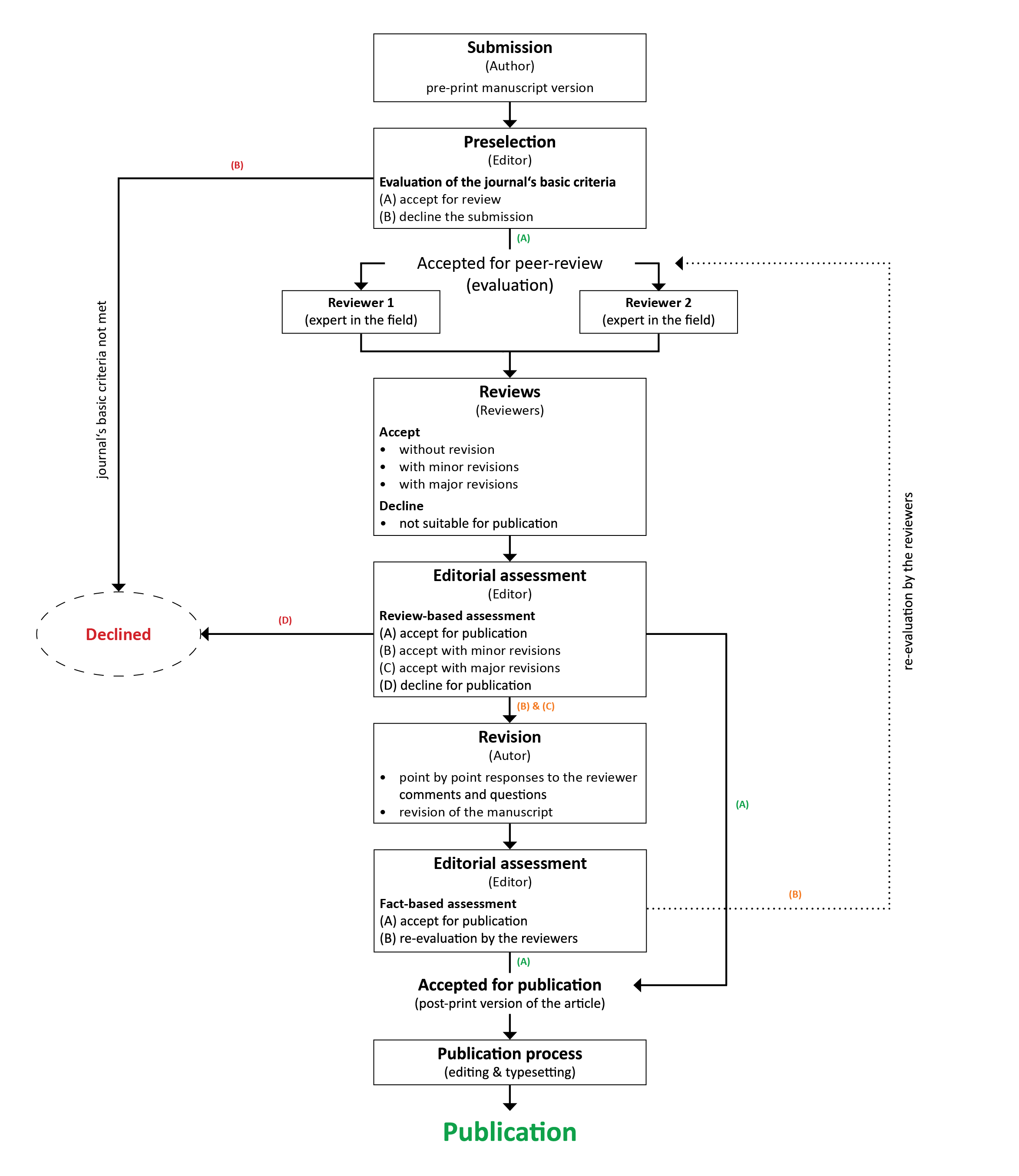
Review process
All publications of the journal - with the exception of Reviews, Editorials and Obituaries - undergo a multi-stage peer-review process to ensure the scientific and editorial quality of each article. All submissions are reviewed by the editorial board and at least two independent external reviewers who are experts in the relevant field of research. The peer reviews are double-blind. The managing editor ensures the anonymity of the authors and the reviewers.
We greatly appreciate the work of our external reviewers and will publish a cumulative name list on our website from Volume 94 onwards.
The procedure described and illustrated below applies to all peer-reviewed sections of the journal to which authors can submit articles. The editorial board aims to publish high quality articles and to develop them further with the authors during the review and editorial process.
1 | Article preselection
All submissions are primarily reviewed by the editorial board. The following basic criteria must be met:
• The submission fits thematically into the scope and selected section of the journal.
• The manuscript has not been previously published elsewhere.
• The journal's author guidelines have been followed.
• The article is coherent and clearly written (including language and grammar).
Articles that do not meet the basic criteria are usually rejected during the article preselection process.
2 | Review
All submissions will be reviewed by at least two independant external reviewers who are experts in the relevant field of research. The following review criteria must be met:
• Ethical guidelines: The guidelines of the journal are met.
• Relevance: The content of the article fits the journal's scope and readership.
• Research: The scientific research questions are presented clearly and understandably within the article.
• Background: The theoretical and scientific background is presented in detail and is included in the discussion.
• Methods: Scientific methods are described transparently.
• Results: Results and conclusions are clearly presented and discussed in an comprehensible way.
You find a detailed review form here.
3 | Editorial assessment
The expert opinion-based evaluation is performed by the editorial team and leads to the following options:
➟ accept for publication
➟ accept for publication with minor revision
➟ accept for publication with significant revision
➟ declined for publication
4 | Revision
The authors have the opportunity to revise the manuscipt based on the reviews and editorial comments as well as to respond to questions and comments from the reviewers.
5 | Editorial decision
The editorial board can make a final decision directly or after consultation with the reviewers. An additional reviewer is consulted if the first two primary reviews contradict each other. One of the following decisions is made:
➟ accept for publication
➟ re-evaluation by the previous reviewers or a new reviewer ➟ step (2)
Illustration of the journal's review process









